Head Injury Protocol
READY
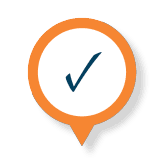
READY

READY

READY

RECOGNISE

RECOGNISE

RECOGNISE

RECOGNISE

REFER

REFER

REFER

REFER

Membership Benefits
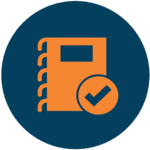
Litigation protection
Lawsuits in the concussion space are happening on a regular basis in the US. It’s only a matter of time before a lawsuit is instituted against a school or club in Australia for negligent sports concussion management. The HeadSmart™ Sports Concussion Programme understands the critical interventions required for a school or club to mitigate risk against claims and acts as defence to careless concussion practices.
Concussion laws in the United States are based on three key principles, and neglecting anyone of those constitutes breaking the law. The law states that schools and clubs should provide effective education programmes to athletes, players, coaches, trainers, physio’s and all other staff involved in the sport.Indeed, many sports concussion litigation cases have targeted an oversight in providing basic concussion education. Secondly, any athlete or player witnessed to sustain a head injury or report a head injury, should be removed from the game or event immediately and seek medical attention. The third key principle emphasises that all concussed athletes and players should be cleared to return to their sport by a medical doctor only.

Find a doctor
The Accident Compensation Commission (ACC) in New Zealand showed how distributing a concussion information card to coaches and trainers had a profound “cost saving” benefit. In the communities that received the card, the time to medical contact after a head injury was reduced on average 33% (6 days to 4 days), which produced a $ 690 000 cost saving for the ACC.
The take home message here is: see a medical doctor as soon as possible after a head injury. Make sure of an accurate head-injury diagnosis. In so doing, the socioeconomic cost of the concussion is reduced dramatically as there are likely to be less concussion-related complications.
HeadSmart™'s custom-designed FirstResponderTM Concussion Recognition App comprises a nationwide Google map location network of medical doctors who are competent to treat concussion. Download the App today. Get access to our network and have potentially less costly concussion-related issues after a head injury.
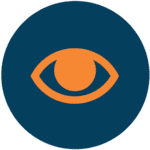
Education programme
HeadSmart™ invests significant time and resources into online education and social media awareness. Schools and clubs under the HeadSmart™ banner have access to an ongoing annual education and awareness programme. The education programme focuses on changing attitudes towards concussion and translating this into a change in on-field and off-field behaviour towards the concussion paradox. The end result should be improved-reporting concussion symptom reporting.

CogState concussion assessment
HeadSmart™ understands the critical importance of individualised concussion management for each athlete or player. By comparing a post-concussion computerised brain function assessment to baseline screening prior to the season, medical staff can accurately track cognitive change from normal. Making the diagnosis at the time of injury and also being able to track cognitive recovery during the post-concussion period is crucial. Schools and clubs as HeadSmart™ members receive the value-add of free CogState concussion assessments as part of their membership for the year.
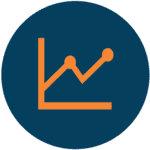
Long-term brain function monitoring
Many athletes and players report suffering the long-term after-effects of repeated, poorly managed head injuries and concussions during their playing days. Again, many may seek compensation for damages and losses incurred while playing at your school or club. HeadSmart™ securely stores all CogState computerised concussion assessments in cloud-based servers which comply with national privacy laws, have been subjected to security and performance testing. Your information is completely confidential with us. The concussion specialists at HeadSmart™ are in a position to alert you to assessment reports showing either deteriorating or prolonged impairment of brain function in an athlete or player at your school or club.
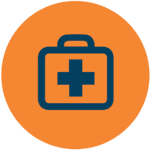
Specialist E-consulting
Renowned sports concussion specialist, Dr Ryan Kohler, medical director at HeadSmart™, is always on hand to provide important medical advice and / or perform remote area consulting via conference call as a cost effective service to all HeadSmart™ members.
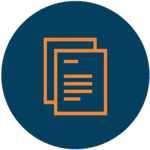
Risk profiling
Prior to the season, it is very important to understand an athlete or player’s baseline symptom profile, their past concussion history and the presence of any co-existing modifying factors. This information may affect the management decisions. HeadSmart™ uses an effective mobile documenting system that all physio’s and doctors can use to screen athletes and players before a season or tour and conveniently have all that information available when a head injury occurs away from home base.
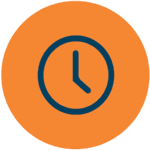
Back to school
Before returning to exercise, HeadSmart™ advocates that athletes and players have returned comfortably to activities of daily living. In addition, the importance of participation in school for learning and work for earning an income, have to take priority over exercise initially. Being able to document that an athlete or player is coping with the memory and concentration demands of a full day of work or school, is a realistic goal in the context of concussion recovery.
In reality, once this is achieved, a staged exercise progression can begin. It is impractical to tell an athlete or player to rest completely. The brain never truly rests. Responsibilities and activities in life make that ideology a pipe dream. In the early stages of concussion, perform school and work to levels that do not worsen the way you feel with concussion (symptom load).

Back to exercise
Athletes or players are often “champing at the bit” to get back to their respective sports after concussion. The challenge is to hold them back long enough to tick all the head injury protocol boxes, yet no longer than necessary just to satisfy a rule or guideline, which has no scientific basis, stipulating a set time away from the sport. As mentioned earlier, HeadSmart™ advocates a scientific and objective approach to individualised concussion management. Focusing performing on balance and co-ordination skills early on does not increase heart rate or blood pressure and is therefore a relatively safe way of having the athlete or player pro-actively starting their concussion recovery. Exercise rehabilitation can start soon after the injury. Make sure that the exercise load is below the level that would worsen symptoms.
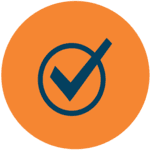
Medical clearance certificate
In line with the third key principle of United States, an athlete or player, who has been diagnosed with concussion, must be medically cleared by a qualified medical doctor before starting contact training drills.
Testimonials
Latest Updates
HeadSmart™ partners with revolutioniseSPORT in grassroots concussion management.
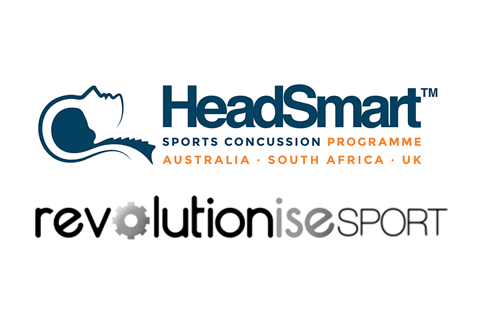
Get the FirstResponder™ Concussion Recognition App now! Free download from the App Store: http://apple.co/2bw3yEz Free download from Google Play: http://bit.ly/2bLeQoH
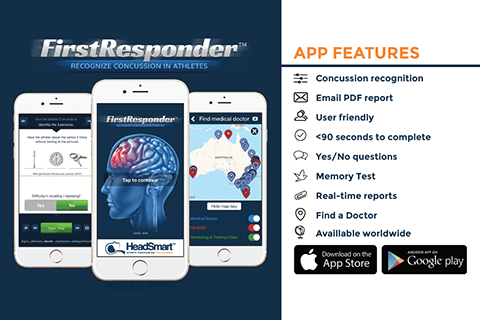
BREAKING NEWS - We are very proud to announce English Premier League team, AFC Bournemouth, have signed up with the HeadSmart™ Sports Concussion Programme as they start their 2nd EPL season 2016/17.

One or more cognitive and/or physical effects can frequently be reported by athletes who have concussion. Some symptoms can develop over time and will not be present directly after concussion. Remember: you do not need to lose consciousness or be knocked out to get concussion. Only 10% of concussed players are knocked out.

HeadSmart™ Sports Concussion Programme proud to be supporting Australian Life Saving team travelling to compete in World Championships, Netherlands next week. Surf live saving are putting health & safety of athletes first by adopting a comprehensive concussion management system. Great work Danny, Shane and Nick for creating a first in the sport - concussion happens out in the surf for sure.

Concussion signs to look for field side.

Gridiron Australia has partnered with the HeadSmart™ Sport Concussion Programme to provide an end to end sports concussion solution for all Gridiron Australia Members.

"We have used the HeadSmart™ concussion testing for the past three seasons at Central Coast Mariners Football Club. It forms a key part of our management of concussion. It’s very reassuring to know that when a player passes the after injury test when recovering from a concussion that their brain function has been objectively measured and has returned to at least their baseline level. We can then move forward with returning to play with confidence that our player is ready and that we are all protected by this objective process. Such simple, cost effective and objective testing is a must in today’s sports medicine environment."
- Testimonial from Central Coast Mariners
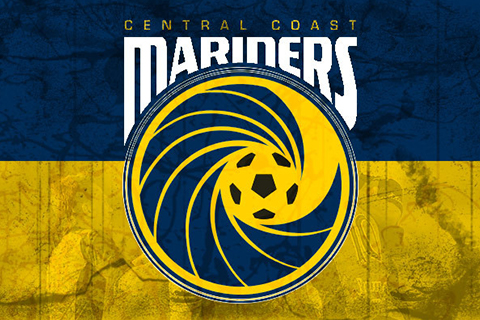
FAQ
What is concussion?
Read More
What is concussion?
Concussion is an injury to the brain that occurs as a result of an impact to the head or body. Any impact to the head of sufficient force can cause structural brain injury, which can be seen with the naked eye on brain scans. Or the impact can cause concussion, which is an injury to brain nerve cells that does not necessarily show up on brain scans. Concussion is a disturbance of brain function which manifests in different athletes or players in many different ways.
The fundamental change to the concussed brain is a slower speed to take in and processes information. The delay in reaction time that occurs is caused by damage to nerve cells (neurons). Therefore, the message signal that is transmitted along the damaged nerve, transmits much slower.

The nerve cells can be damaged by a direct blow to the head, which causes the brain to rotate and/or move forward and backward. Indirect impact to the body can transfer an impulsive force to the brain and have a similar outcome.
Looking at how the brain nerve cells dysfunction in a more detail gives further understanding into the condition. The brain rapidly decelerates in the skull with impact causing changes to the pattern of neuron conduction, glucose metabolism, membrane protein expression and brain blood flow. The net effect of these changes is an energy shortage for the brain. An indirect marker of the brain’s energy balance is N–acetylaspartate (NAA). NAA is measured using proton magnetic resonance spectroscopy (MRS) and can be used as an index of metabolic recovery after concussion in athletes.
NAA levels have been found to be decreased for up to 30 days after concussion - long after the athlete reports to feel well and most likely has returned to sport. This phenomenon may put the brain at further risk of a second concussion if a second head impact occurs during this window of vulnerability.
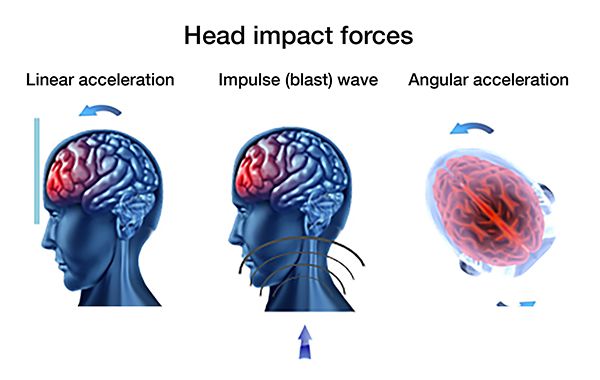
Loss of consciousness is uncommon and occurs only in 10 - 20% of concussion cases. If managed correctly, recovery from concussion may take 10 - 14 days. 10 - 15% of athletes or players may take longer to recover (weeks to months). The group of athletes or players who take longer to recovery should be managed by a multidisciplinary team of concussion specialists.
Do you lose consciousness?
Read More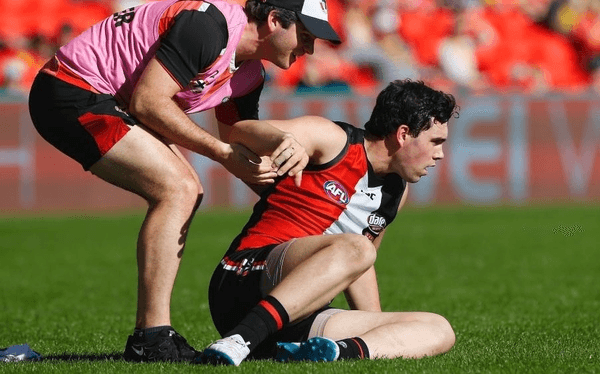
Do you lose consciousness?
What are the key signs that an athlete or player displays when sustaining a head knock? It’s important to recognise these signs and remove the athlete from the playing environment immediately. These signs may be quite subtle and careful observation is needed to recognition.
- Unconscious or unresponsive
- Seizure
- Muscle rigidity / tonic posturing
- Loss of body tone / flaccidity
- Loss of memory
- Poor balance
- Unsteadiness
- Confusion
- Disorientation
- Holding of the head
- Slow in getting up
- Blank stare/glassy eyes
- Facial or scalp injury
- Slowness in answering questions
- Uncooperative
- Aggressive
- Emotional or tearful
- Poor playing performance
- Reports concussion symptoms
- Reports of unusual behaviour
- Post traumatic amnesia
 Download the FirstResponder Concussion Recognition App today
Download the FirstResponder Concussion Recognition App today
How does concussion feel?
Read More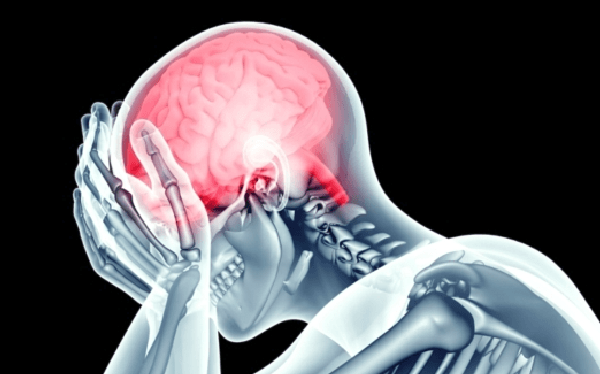
How does concussion feel?
Athletes or players may feel symptoms after a head injury and not necessarily recognise what they are feeling as concussion. It may be necessary to specifically ask the athlete or player the following checklist of symptoms after a head knock. Should an athlete or player exhibit one or more of these symptoms, they require an immediate concussion assessment by a qualified medical doctor. The constellation of concussion symptoms includes;
- Headache or pressure in the head
- Nausea or vomiting
- Dizziness
- Blurred vision
- Light sensitivity
- Sensitivity to bright light & loud noise
- Feeling slow or foggy
- Feelings of sadness, frustration or irritability
- Drowsiness
- Poor concentration/attention
- Memory difficulty
- Confused and/or disorientated
- Inappropriately emotional
- Tearful
- Sleep difficulty
- Easily exhausted
- Reduced motivation

It is important to bear in mind that sports concussion cannot be diagnosed at one point in time. Symptoms can evolve over time and serial assessments must therefore be performed, so other conditions that can mimic concussion are ruled out.
Can concussion be prevented?
Read More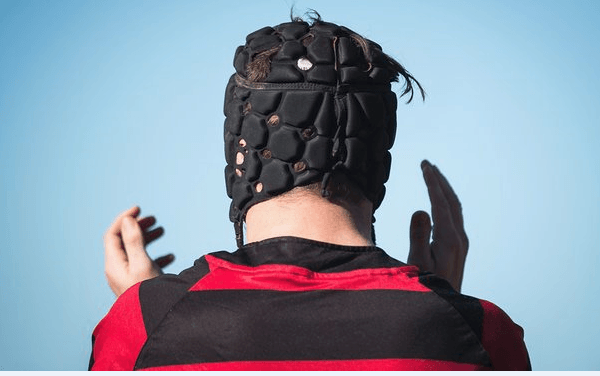
Can concussion be prevented?
Parents, coaches and athletes have a vested interest in concussion prevention. In the competitive world of professional sports, it is now common practice to have a well-rehearsed action plan in place to deal rapidly and effectively with concussion. An effort has been made to prevent concussion in sport. At school level, where younger athletes are particularly vulnerable to concussion, these efforts are important.
Education & awareness
Increased awareness of subtle behaviour changes in children can alert parents to possible concussion. Mood swings, heightened emotions, restlessness, irritability, poor school performance and lethargy are common symptoms of concussion in children that should be identified as soon as possible.
Rule Changes
A number of sporting codes have introduced rules to avoid dangerous play. In 2012 the NFL banned players from using their helmets to impact players on the head or neck, whereas in rugby, spear tackles, where a player lifts and dumps a player on his head, is deemed a red card offence.
Is baseline screening important?
Read MoreIs baseline screening important?
A baseline computerised screening is a brain function assessment that is routinely used to establish normal thinking ability in an athlete or player. The results of a baseline screening can be compared to the results of an after-injury computerized brain function test to assist in the diagnosis of concussion and plan recovery.
A computerised baseline screening typically evaluates the athlete or player:
- Simple reaction time
- Learning and memory skills
- Ability to pay attention or concentrate
- Problem solving capacity

Baseline computerised brain function testing is important for the following reasons:
- Is readily available and cost effective
- Can be done in the quiet of your own home (remote administration)
- Detects when impaired brain function lasts longer than the athlete has symptoms
- Precisely measures reaction time
- Provides objective information about the player’s recovery
- Has in built sophisticated software checks that detect when a player is purposefully performing poorly, especially on baseline testing
- Provides extra information in players with multiple concussions
- Helps to find those players with delayed brain function recovery who need more detailed testing with a neuropsychologist
- Is a useful add-on to clinical assessment and judgement
- Provides added assurance for fast tracking return to play decisions in professional sport
- Is easy to administer and takes a short time
- Helps when athletes under reports their symptoms in order to keep playing
- Younger players may not recognise the symptoms of concussion
- Athletes may be overly anxious
- Liability mitigation benefit for schools and clubs
Concussion outcomes can be unpredictable. Athletes and players participating in contact and collision sport should have a CogState baseline test before injury. This practice improves the ability of doctors to manage athletes back to sport safely. Objective information about the athlete’s brain function is one part of the overall care.
International team physicians find baseline and after-injury computerised testing very helpful. Individualized comparisons of brain function improved the accuracy of return to play decisions. Players self-reporting of their symptoms is subjective. The team physician is therefore relying on the honesty of the player when asked to answer questions about having concussion symptoms. The objective data that the CogState test provides is an invaluable piece of the return to play puzzle.
When to start school?
Read More
When to start school or work?
Students or workers recovering from concussion can worsen their symptoms by attempting full school or work days, normal homework and testing too early in their recovery. A delay in testing, less school hours and frequent breaks between classes, would be appropriate. Wait until the learner has minimal symptoms and near normal concentration before increasing the load on the brain. Limiting the use of computers, mobile phones and television viewing soon after concussion, can allow recovery at a normal speed. A similar approach to managing the load on the brain in children can apply for adults returning to work after concussion. However, no studies have yet provided guidelines on a clear return to work progression for adults. Remember, it’s not possible to speed up brain cell recovery beyond the normal healing rate, but you can slow it down.
HeadSmart™ members receive individualised school and work progression guidelines.

How common is concussion?
Read More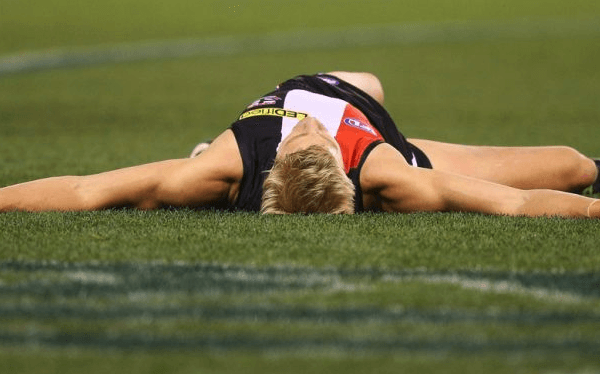
How common is concussion?
Concussion can occur in virtually any sport. Concussion is notoriously under-reported. Actual numbers are potentially much higher than currently thought. 1.6 to 3.8 million concussions occur in sport every year in the United States. In Australia, the probability of being concussed while playing in any of the football codes is approximately 1 in 7.
Below are reported rates of concussion in a range of sports;
AFL (community, junior, elite):
- 5 - 6 concussions per 1000 player game hours
- 6 - 7 player concussions per team per season
- 90% of concussions occur in games / 10% occur in training
Rugby League:
- NRL 3.9 – 5.3% of all injuries are concussions
- NYC (U20) 3.5 – 6.4 % of all injuries are concussions
Rugby Union:
- ~ 8 concussions / 1000 player hours
- ~ 2 – 3 player concussions per team per season (10-15% of the team)
- Concussion in professional players ~ 2.9 - 9.1 per 1000 player hours
- Concussion in non-professional players ~ 0.6 - 5 per 1000 player hours
- Concussion in school rugby union ~ 10.03 per 1000 player hours

In wheelchair basketball:
- ~ 5.82 – 6.67 % of players have concussion in a season
- Women are 2.5 times more likely to sustain a concussion compared to men
- 40% of athletes did not report concussion, for fear of being removed from physical activity
- 60% of players reported concussion to the coach
In the United States:
- ~ 6.8% of NFL players are concussed per year
- 8.9% - 15% of high school athletic injuries are concussion related
- 5.8% of all college athletic injuries are concussion related
- In basketball concussion accounts for 6.5% of women and 3.6% of men’s injuries
| Sport | / 1000 hours exposure | |
|---|---|---|
| 1. | Horse Racing (amateur) | 95.2 |
| 2. | Taekwondo (competition) | 50 |
| 3. | Mixed Martial Arts | 48.3 |
| 4. | Horse Riding (jumps) | 25 |
| 5. | Kick Boxing | 19.3 |
| 6. | Horse Racing (flats) | 17.1 |
| 7. | Boxing (professional) | 13.2 |
| 8. | Rugby League | 14.4 |
| 9. | Rugby Union (junior) | 10.1 |
| 10. | Rugby Union (professional) | 9.1 |
| 11. | Rugby Union (amateur) | 5.1 - 7.9 |
| 12. | Aussie Rules | 4.1 |
| 13. | Rugby Union (sevens) | 3.01 |
| 14. | Soccer | 0.5 |
| 15. | Basketball | 0.4 |
| 16. | Wrestling | 0.4 |
| 17. | Field Hockey | 0.2 |
| 18. | Gymnastics | 0.2 |
Who should you see?
Read More
Who should you see?
An athlete or player with a head injury must see a medical doctor as soon as possible to make an accurate head injury diagnosis of concussion.
It is important to bear in mind that concussion cannot be diagnosed at one point in time. Symptoms can evolve over time and serial assessments must therefore be performed over time, and other conditions that can mimic concussion should be ruled out.
Should I use medicine?
Read More
Should I use medicine?
One of the most prevalent symptoms of concussion, present in almost 90 percent of cases, are headaches. Pain relief in the early stages post injury is known to assist a normal recovery process by making the athlete or player feel better. The only analgesic medication recommended by health care professionals for the safe and effective treatment of early concussion headaches is paracetamol.
- Only use paracetamol to treat concussion headaches in the early stages of the injury.
- Avoid ibuprofen, aspirin and other anti-inflammatory drugs, especially within the first 24 to 72 hours, as they are associated with rebound headaches and can thin the blood, leading to bleeding of the brain.
- Athletes or players should be vigilant when using anti-inflammatories to prevent muscle pain and stiffness before playing sport. The use of NSAIDs prior to head injury increases the risk of brain bleeding.
- Do not use sleeping tablets or any other recreational, prescription or over the counter drug that can affect cognitive function and neurological recovery.
An initial period of rest (24-72 hours) combined with safe, effective pain relief is the best first aid for the symptoms of concussion.
What to do in first 48 hrs?
Read More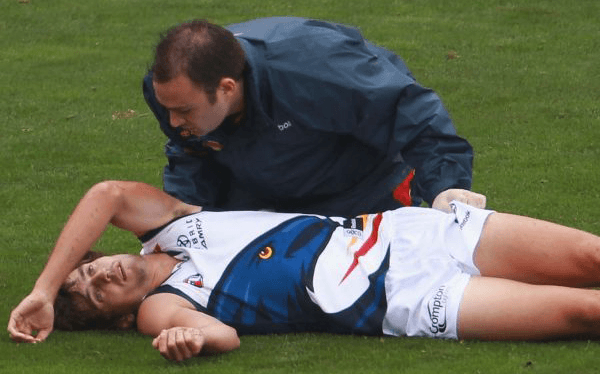
What to do in first 48 hrs?
The first 48 hours post-concussion are vital in minimizing health risks from concussion and ensuring an optimal recovery timeframe.
During this period parents, coaches, teachers and other responsible adults are encouraged to monitor the athlete or player as closely as possible for the onset of signs of more severe complications.
The risks of epidural hematoma and subdural hematoma may manifest hours or even days after the head trauma.
If the athlete or player is unconscious, basic first aid principles apply. Protect the player’s neck and secure an open airway. Urgent hospital referral is necessary for any player who has lost consciousness as a result of a blow to the head or body.
Do’s
- Consult a medical doctor as soon as possible
- If discharged from hospital, ensure the athlete or player is under the supervision of a responsible adult
- Monitor and record any symptoms of concussion such as headaches, dizziness, nausea, fatigue, sleep disturbances, memory lapses, mood swings, poor concentration and any other unusual feelings
- After being discharged from the emergency department, make an appointment with your medical doctor to plan your full treatment and recovery plan
Don’ts
- Consume alcohol
- Take anti-inflammatory medication and aspirin
- Exposure to excessive bright light and loud noise
- Spend long periods of time playing games on computers and television
- Exercise, until cleared by a medical doctor
- Use mobile devices for longer than one to two hours each day
- Driving a motor vehicle
Head trauma red flags
- When to Go to Hospital
- Visit a hospital immediately if:
- The skull is fractured
- The trauma has penetrated the skull
- The athlete has lost consciousness
- There is a deterioration in the conscious state after the injury
- Confusion levels increase
- The headache becomes more severe as time passes
- Persistent vomiting is present
- Convulsive movements are present
- Develops weakness of upper or lower limbs
- The player has sustained additional concussive injuries in a match or training session
- The athlete is a child
- The athlete is at higher risk (hemophiliacs, users of anticoagulant medicine)
- The injury was high-risk, such as a high velocity impact or a missile injury
- The athlete received inadequate supervision following the injury
What to do on the first night as a parent or guardian?
Uninterrupted sleep is thought to be the best medicine for concussion symptoms. The only time it’s recommended to periodically wake the patient to monitor symptoms is if there was loss of consciousness or amnesia at the time of the trauma, or the signs of concussion such as headaches, vomiting, dizziness or sensitivity to noise and light are still present. In this context, checking to see that the athlete or player is rousable once during the night, is sufficient.
When to start exercise?
Read More
When to start exercise?
Deciding when an athlete or player is ready to start exercise an art and not an exact science. Once an athlete or player is back to hours at school or work, start a balance and postural stability re-training programme. A progression to light aerobic exercise can follow the initial static balance and co-ordination re-training. 23 - 81% of persons report dizziness and balance problems in the first few days after concussion and 16 – 18% of concussed athletes may have ongoing dizziness for 3 months. Hence, the importance of balance training.
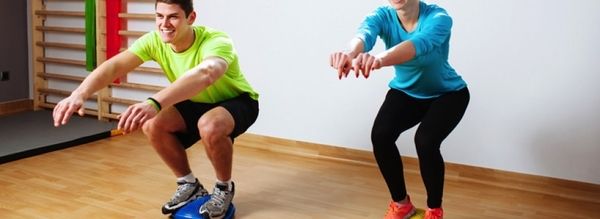
Concussed athletes also have an increased risk of lower limb injury following concussion. This finding in recent studies is proposed to be caused by impaired body position sense and awareness. Balance drills should continue for months after the athlete or player is back at sport. Physical Therapists are in an excellent position to supervise, individualize and adapt this form of rehabilitation. Balance training programmes are effective at treating dizziness and improving balance after head injury.
Once symptoms of concussion have disappeared and the athlete or player is feeling their normal selves, coping at full work or school and has progressed through an element of balance training, start light non-impact loading aerobic exercise and progress through a number of stages, ending with high intensity sports specific exercise activity.
It is very important that an athlete or player be evaluated by a medical doctor and cleared before starting high risk or contact training activity, and not simply return on their own time.

| Stage | Exercise | Progression | |
|---|---|---|---|
| 1 | Balance & co-ordination drills | Reaction time and co-ordination programme as prescribed by physio or trainer | If a low number of symptoms are present, may start Stage 2 |
| 2 | Light cardiovascular exercise | Light jogging for 10-15 minutes, swimming or stationary cycling at low to moderate intensity. No weights training | If no symptoms, start Stage 3 after minimum of 24 hours. If symptoms occur, rest 24 hours & repeat Stage 2 |
| 3 | Impact loading cardiovascular exercise | Individual running drills and skills without contact. No weights training | If no symptoms, start Stage 4 after minimum of 24 hours. If symptoms occur, rest 24 hours & repeat Stage 2, then progress |
| 4 | Sport specific non-contact training | More complex training drills. May start progressive (low level) weights training | If no symptoms, medical certificate required before Stage 5. If symptoms occur, rest 24 hours & repeat Stage 3, then progress |
| 5 | Sports practice | Full contact practice following medical clearance certificate being handed to the club or school sport master | Player, coach, parent to report any symptoms to medical doctor. If symptoms occur, then medical doctor to review |
| 6 | Sports game | Unlimited sport participation | Monitor for recurring symptoms or signs |
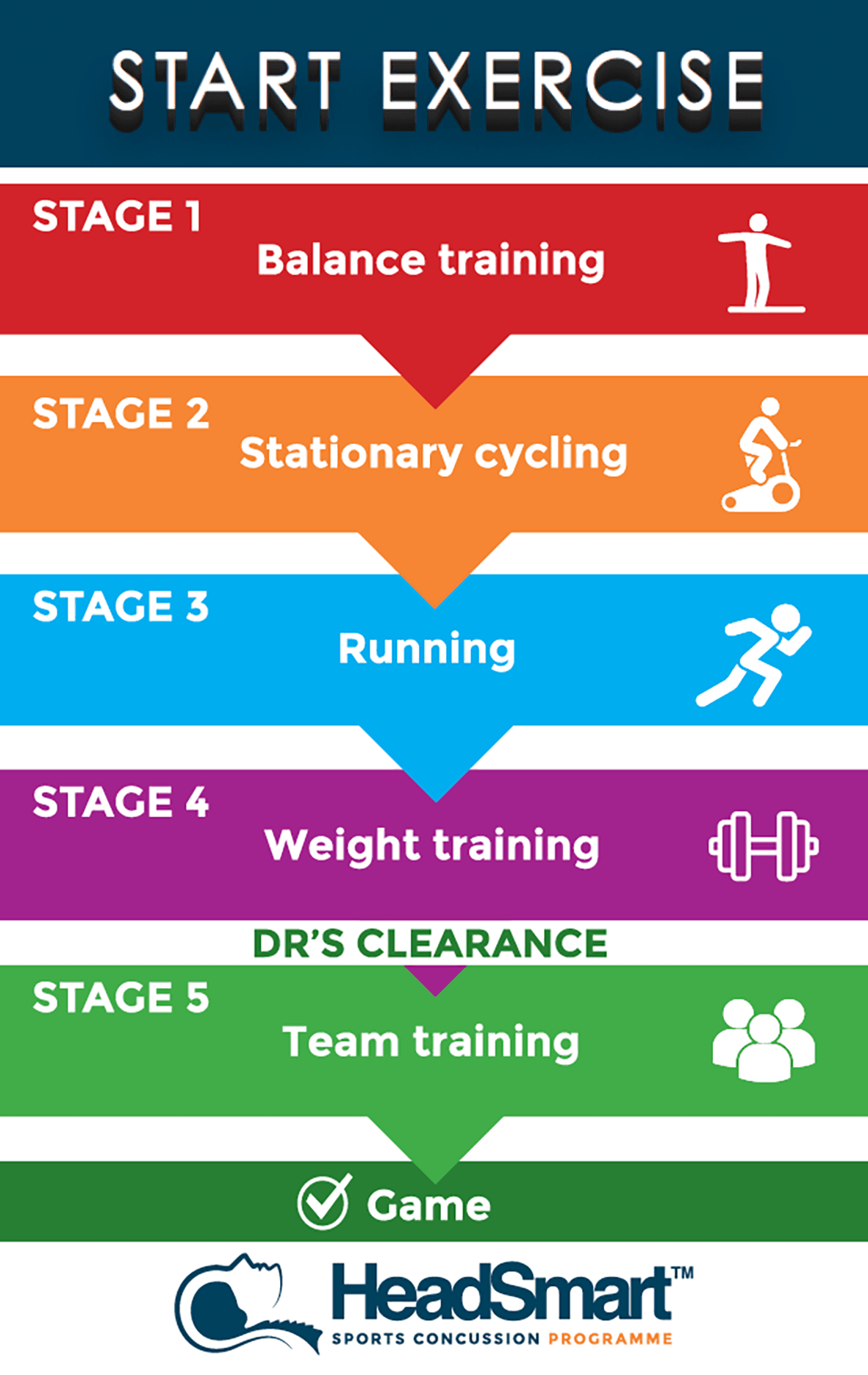
Need doctor's clearance?
Read More
Need doctor's clearance?
Once an athlete or player has completed the 4 Stages of exercise progression prior to contact training, a medical doctor should re-assess the case. The medical doctor needs to review copies of the after-injury CogState test performances in comparison to the baseline scores. In addition, review evidence of the athlete or player feeling completely well during the 4 exercise progression stages. The athlete, player, parent or guardian should take full responsibility for the final decision to return to contact training based on the medical advice given.
Are there complications?
Read More
Are there complications?
Recurrent concussionDelayed recovery time
Post-Concussion Disorder (PCD)
Post-concussion disorder is a group of conditions that can produce prolonged symptoms for an athlete or player after concussion. Little is known of why the physiological changes persist and why it affects some people and not others. Assessment of the athlete should determine whether the symptoms are indeed the physiological effects of the concussion or are the symptoms related to a co-existing neck injury, mood disorder, migraine history or an inner ear disorder (vestibule-ocular injury). A specialist in concussion management will be able to make the definitive diagnosis and plan specific treatment.
Second-Impact Syndrome (SIS)Experiencing a second concussion before the symptoms of the first concussion have resolved, can prove fatal. With SIS, the brain usually swells rapidly due to its inherent vulnerability following the first head or body blow. The secondary event, together with the altered levels of brain chemicals typical of concussion, can hamper the brain’s ability to self-regulate the amount of blood flow to the brain. SIS can result in increased cerebral blood volume and rapid brain swelling, particularly amongst young athletes. Diffuse cerebral swelling (DCS) may be a more accurate descriptor for this rare condition which could relate to genetic susceptibility rather than impact alone.
Chronic Traumatic Encephalopathy (CTE)CTE is a progressive neurodegenerative disease of the brain which has been linked to persons with a history of repetitive brain trauma, including symptomatic concussions as well as asymptomatic sub-concussive hits to the head. The repeated trauma to the brain triggers a progressive degeneration of the brain tissue. Memory loss, confusion, impaired judgment, impulse control problems, aggression, depression, and, eventually, progressive dementia have all been shown to be possible symptoms of the disorder. The onset of disease can begin long after the last brain trauma, and has typically only been diagnosed after the death of the athlete or player. Recently, a study in the USA has utilized brain scan technology to develop a potential test for CTE. At this stage, no definitive cause and effect relationship has been found between concussion in sport and CTE. Research is ongoing in this area both in Australia and the United States.
HeadSmart™ sports concussion tests can quickly and effectively detect concussion after an injury, allowing for immediate removal from play and referral to a medical doctor.
Do mouthguards help?
Read More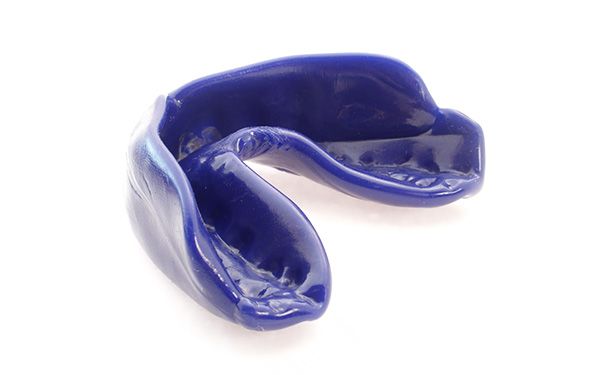
Do mouthguards help?
The use of mouth guards has been shown to reduce dental injuries and maxillofacial injuries. Biomechanical (laboratory) studies demonstrated that mouth guards reduced impact forces applied to the jaw from being transmitted to the brain. Clinical concussion studies have not shown that athletes or players using mouth guards have fewer concussions.
Does headgear help?
Read More
Does headgear help?
Helmets are compulsory in certain high speed sports. Cycling, skiing and motorsports use helmets to reduce the chance of severe structural brain injury. Protective headgear does not prevent or reduce the severity of concussion in sport.
If scan is normal?
Read More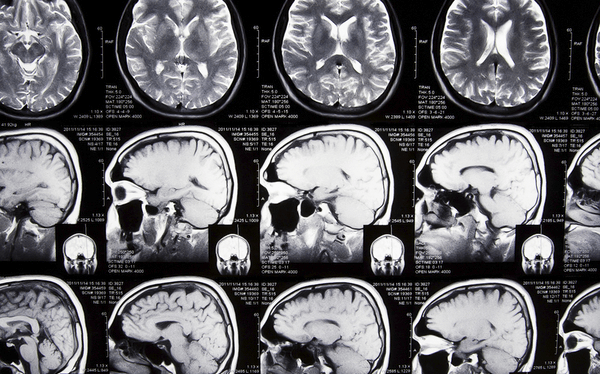
If scan is normal?
A normal brain scan does not exclude concussion. All that a normal brain scan indicates is that there is no structural injury to the brain. Concussion cannot be seen on a CT or MRI scan, therefore clearance cannot be given to a player to return to sport on the basis of a normal CT or MRI scan.
While baseline, side line and remote concussion tests can reliably assess brain function pre and post- concussion, they are not designed to detect structural damage within the brain. Instead, brain imaging can be used to assess whether there is swelling or bleeding of the brain.
Consider conducting brain scans if the athlete or player displays any of the following signs;
- Fractured skull
- Penetrating skull trauma
- Loss of consciousness
- Deterioration in conscious state following injury
- Increasing confusion
- Worsening headache post injury
- Persistent vomiting
- Any convulsive movements
- Focal neurological signs
- More than one episode of concussive injury in a match or training session
- High-risk injury mechanism (i.e. high velocity impact, missile injury)
In addition, the following groups of sportspersons are at heightened risk of brain injury;
- All children with head injuries
- High-risk patients (i.e. haemophilia, anticoagulant use)
- Athletes who had inadequate post injury supervision
There are several brain scans currently available based on different technologies and techniques.
CT Scans
A CT or computerised tomography scan is one of the best techniques to evaluate bleeding or swelling of the brain within the first 24 to 48 hours post-concussion. It is also preferred over an MRI to detect skull fractures, as it is faster, more affordable and easier to perform. A disadvantage is that it cannot show microscopic damage to neurons and brain function disturbance.
MRI Scan
A magnetic resonance imaging (MRI) scan is arguably the more appropriate imaging procedure 48 hours or longer after an athlete or player has suffered head trauma. It is particularly accurate in detecting traumatic lesions of the brain and does not expose athletes or players to radiation. Changes in white matter tracts, degraded blood products or small capillary bleeds around nerve cells can also be identified on MRI.
DTI Scan
Diffusion tensor imaging (DTI) is a magnetic resonance imaging technique which provides a calculable measure of the often subtle changes within the white matter tissue of the brain following concussion. These changes may provide clues as to why concussion manifests with certain neurological symptoms. Despite showing tremendous potential, DTI may not be applicable to the routine evaluation of concussion.
Safe & Secure
You take your security seriously, and so do we. The presence of SSL means you can rest assured that communications (e.g. credit card numbers) between your browser and this site web servers are private and secure when the SSL session is activated.

Bank level security

SSL Secured





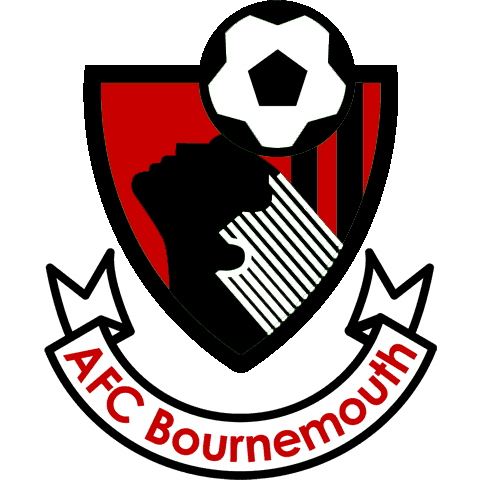
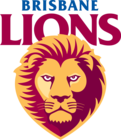
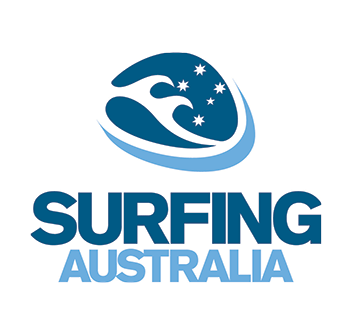
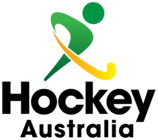




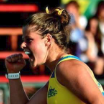






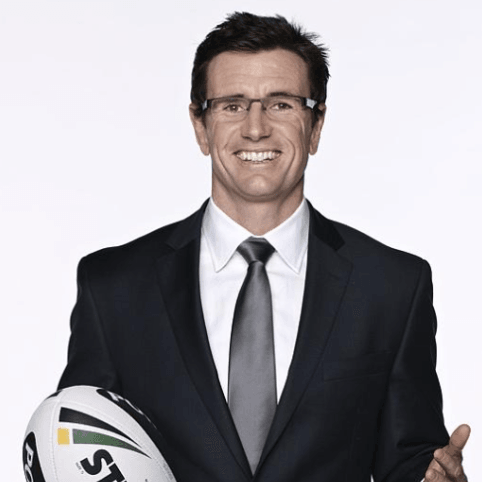

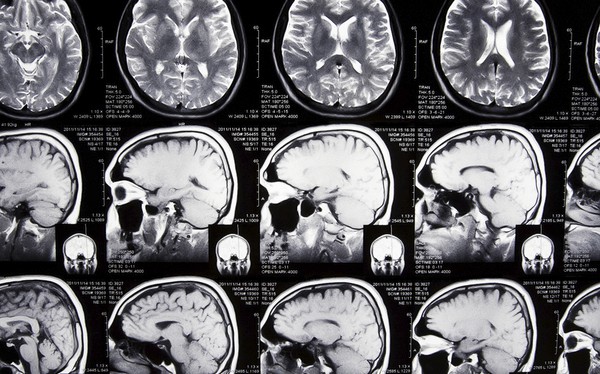
 support@headsmart.me
support@headsmart.me



